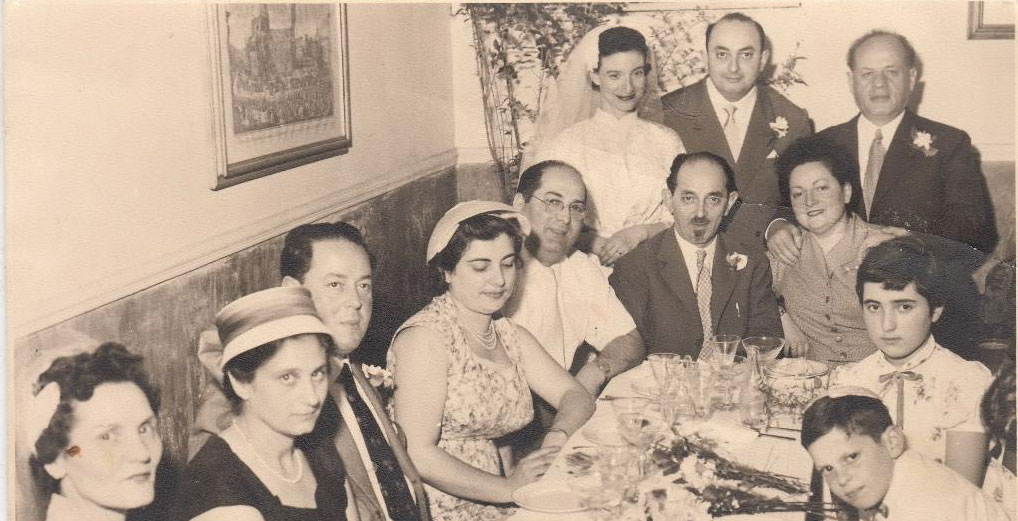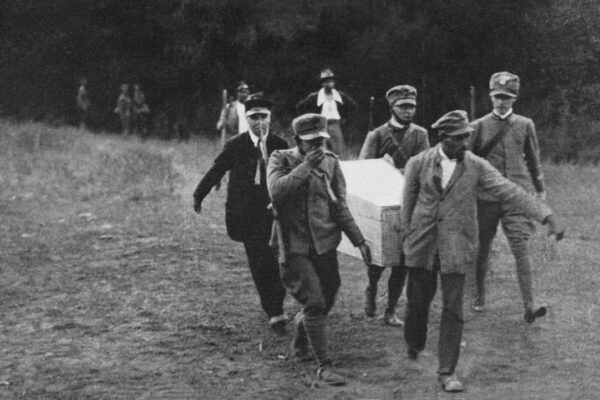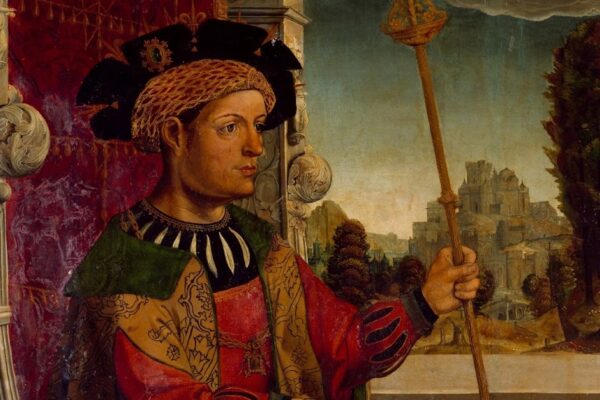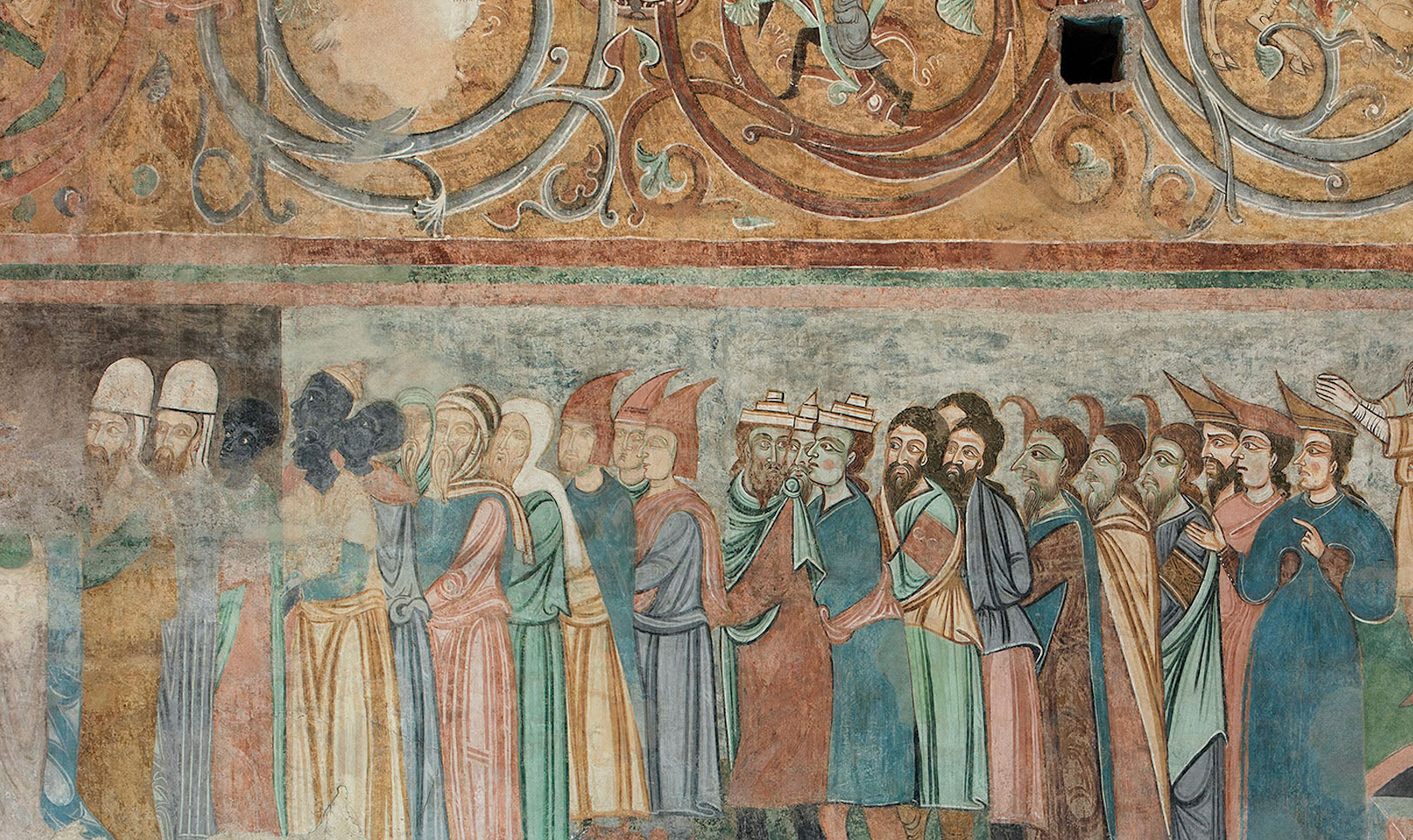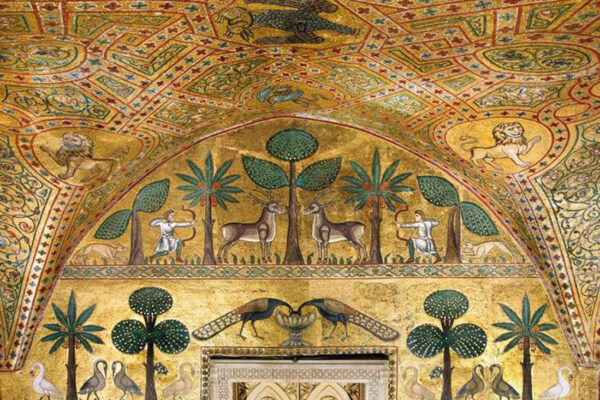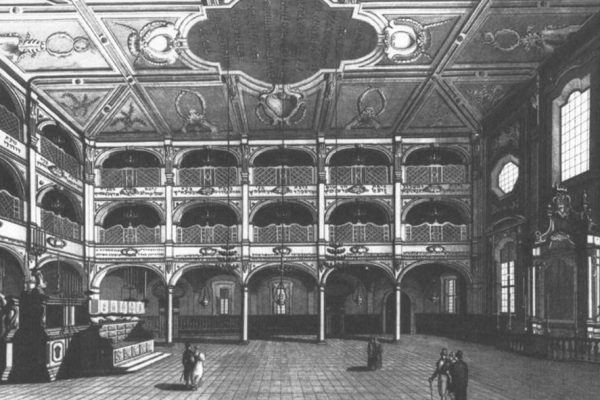After Mussolini: Jewish Life and Jewish Memories in Post-Fascist Italy.
While more research is still to be done, it must be noted that in recent years the history of European Jewry in the aftermath of racial persecutions has been the object of several studies. The post-war situation has been studied – with a main focus on the German case – from various perspectives, ranging from the persistence of anti-Semitism, to the economic consequences and the problems connected to restitutions and reparations, the issues of memory, the new distribution of Jewish presences across the continent, the life in Displaced Person’s Camps, the migrations to Palestine and later the State of Israel, the reorganization of community life2. The aim of this book is to offer a reconstruction of the consequences of Fascist anti-Semitic policies, analyzing the rebirth of Jewish life in post-war Italy, concentrating on the process of social and cultural re-integration, the reorganization of community life, as well as the transformation in the minority’s identity.
Since 1945, in Italy as elsewhere in the West, the small Jewish minority has played the delicate role of cultural intermediary both as regards the memory of the Shoah and the Middle Eastern conflict. A role which has partly been imposed by events and the post-war cultural climate, and which, to a certain extent, individual Jews and Jewish institutions have voluntarily taken up. Certainly, Judaism, Jewish culture and life, cannot only be confined to remembrance of Nazi mass murders or to the relationship, which in any case can vary greatly, with the Zionist dream and its realization. Nevertheless – in an extensively secularized society, which has lost touch with traditional culture – these are undoubtedly two of the most visible and prominent aspects in which contemporary Jewish identity publicly manifests itself. Therefore, piecing together the history of the Jews in Republican Italy requires a reconstruction of the processes that have led to the assigning of that role of testimony and mediation, as well as considering the meaning and repercussions of that historical process.
While taking into account this range of questions and problems, this work is not, however, restricted to examining the role of the Jew in the post-1945 Italian collective imagination. In fact, I felt that it was appropriate to contribute to a rediscovery of real Jews, and thus did not limit this
study to the analysis of the role and nature of the imaginary Jew. I therefore chose to carry out the research from an internal vantage point, aiming first of all at portraying the dynamics of the Italian Jewish Community itself rather than dealing with the attitudes of friendship, hostility or indifference of the surrounding world. It is however implicit that there is no intention of isolating the Jewish community from the wider context; the interest in studying the Jews in the post-war period also arises from the fact that it offers a particular point of view from which to interpret the Italian Republic’s social, cultural and political history. A reflection on the Jewish condition in post- Fascist Italy touches, in particular, on the problem of the continuity between Fascism and the post- war period, as it entails evaluating the long-term effects of the racial persecution. Perhaps it is only in considering the post-1945 events that it is possible to understand fully the vast range of social, cultural and psychological changes triggered by the racist policies. Recognizing this can help to overcome the temptation – which emerges periodically – of minimizing the relevance and the impact of those events.
Traditionally, Fascist anti-Semitism has not merited much consideration in either the Italian or foreign historiography. Italy is often described as an exceptional nation, virtually free of the modern anti-Jewish hatred that thrived on the rest of the continent. The Italian debate on the subject was quite limited until the end of the 1980s. After the important pioneering research of Meir Michaelis and Renzo De Felice, who demonstrated definitively that Fascist racist policies were not imposed by Hitler on Mussolini, a general stagnation persisted for several years in this field of study.3 However, those two very important works did not deal with several salient questions: what were the cultural roots of Mussolini’s racist shift? How autonomous were the Fascist racial ideology and practice in Italy? How were the racist laws implemented? What long-term effect did they have on Italian society (and on the local Jews in particular)? Such crucial questions were set aside for a long time, as the consensus was that the racist policies in the country had little or no roots and had been implemented with a certain degree of mildness.
Since the fiftieth anniversary of the Fascist regime’s racist twist, which was marked in 1988, a new period of systematic in-depth research and lively debate unfolded in Italy. New scholarly works soon set out to re-examine the traditional interpretations: the cultural origins of the phenomenon were actually revealed to be deeply rooted in Italian culture; and the implementation of the racist laws was shown to be both systematic and merciless. While Fascist anti-Semitism did not lead to exterminationist policies, it was the fruit of the peculiar Italian cultural development since the late nineteenth century. Therefore, it must be read considering its autonomous and peculiar history, and not merely in comparison to Nazi ideology.4
These steps forward soon raised a new problem: if we accept the results of recent research, then how is it possible that a set of representations tending to absolve Italian culture took form and gained a practically hegemonic grasp on post-Fascist public opinion? Such a collective absolution was directly connected and intertwined with the formation of the anti-Fascist national identity that was nurtured after the war, becoming one of the foundations of the Italian Republic. The “myth of the good Italian,”5 as this self-representation was defined, has marked for decades the way Italians perceived themselves, easily obscuring the many atrocities committed during the Fascist regime and the war years (from the civilian massacres in the Balkans and in Greece, to the use of nerve gas in Ethiopia, up to the anti-Semitic campaign).
I believe that the study of post-war Italian Jewry is of fundamental importance to fully grasp how such a myth came to be, and how it rapidly gained consensus both in Italy and abroad. In fact we can assert that without the support of Italian-Jewish intellectuals and institutions, such a simplistic depiction of Fascist racism, its origins and consequences, could not have imposed itself so strongly on public opinion as well as on the scholarly community. This work will illustrate how Italian- Jewish institutions, as well as single individuals, contributed to create and legitimate that cultural representation, offering insight on its function within the framework of the minority’s processes of socio-cultural reintegration.
The limited amount of scholarship available and the extreme dispersion of the documentary material, stored in several Italian archives (often awaiting appropriate cataloguing), but also in Israel and the United States, do not, today, permit the drawing up of a complete, systematic and exhaustive account of all aspects of Jewish life in post-Fascist Italy. What is here proposed is, rather, an initial analysis of some crucial, problematic points, which could shed a critical light on issues that – as we shall see – were closely related: the reorganization of the community Italian- Jewish, the remembrance of the Shoah, the relationship with Zionism and the State of Israel.
The account which follows tackles these problems starting from research on archive sources and printed matter, which systematically covered the period 1943-1961 (from the arrival of the Allied armies in Italy to the trial of Eichmann); due to the inaccessibility of consistent documentary material, only brief mention is made of the subsequent period, without claiming to provide a thorough treatment. Considerable space and attention have been dedicated to the delicate transitional period of 1943-1948, because of the significance of the political and cultural processes which, having emerged clearly in that first phase, have had a lasting effect on the direction of the development of Jewish life in Republican Italy.
The book is divided into two parts: the first part elucidates the changes in the organization of the life of the community and the structuring of the minority’s collective identity, while the second part is concerned with the Jewish memory of the Fascist persecution, its relationship with the general cultural climate and its influence on the development of the memory of the persecution and of the early historiography.
Finally, I feel that I should point out that the nature of the available documentation has led me to favour an institutional perspective, paying attention to the life of the community as it emerges from the documents of organizations and associations or from reports of the Jewish press. This does not mean that I am not fully cognisant of how Jewish life, in Italy as elsewhere, unfolds, more often than not, far from, or in fact outside the institutional framework: there are many ways of being and
of feeling Jewish. This issue is undoubtedly of very great interest for the historian and, however difficult it may be to grasp what is firmly enclosed in people’s hearts, I have tried to confront with this delicate question, turning to literary sources and memoirs in undertaking the exploration of those “mental nebulae”6 which constitute the individual and collective identity of Italian Jews.
As a last remark I wish to clarify that the present English language edition constitutes a revised version of the earlier Italian publication. While the overall structure and the main thesis of the book have not changed, I have made some modifications to the text, and particularly enriched the endnotes and bibliography, in order to take into due account the scholarly works that have appeared in the eight years that passed since this work was first published.
1 H. Bettauer, The City Without Jews, (New York: Bloch Publishing Company, 1926 [1922]).
2 Among the few attempts at a comparative, Continent-wide analysis see: B. Wasserstein, Vanishing Diaspora: the Jews in Europe since 1945, (Cambridge (Mass.): Harvard U.P., 1996); D. Bankier (Ed.), The Jews are Coming Back. The Return of the Jews to their Countries of Origin after WWII, (Jerusalem: Bergham Books-Yad Vashem, 2005); L. Brazzo and G. Schwarz (eds.), Jews in Europe after the Shoah. Studies and Research Perspectives, in Quest. Issues in Contemporary History 1 (2010)URL http://www.quest-cdecjournal.it/. Concerning the issue of property restitution in various countries see M. Dean, C. Goshler, P. Ther (eds.), Robbery and Restitution. The Conflict over Jewish Property in Europe, (NY: Berghahn 2007). As stated above, scholarly research on post-war European Jewery has concentrated mainly on the German case; a focal point attracting the attention of researchers has been the life of the survivors in the Displace Person’s camps. On this see, M. Meyers Feinstein, Holocaust Survivors in Postwar Germany (1945-1957), (Cambridge: Cambridge University Press, 2009); Z. W. Mankowitz, Life between Memory and Hope. The Survivors of the Holocaust in Occupied Germany, (Cambridge: Cambridge University Press, 2002); A. Königseder, J. Wetzel, Waiting for hope: Jewish displaced persons in post-World War II Germany, (Evanston: Northwestern University Press, 2001); A. Patt and M. Berkowitz (eds.), We Are Here: New Approaches to Jewish Displaced Persons in Postwar Germany, (Detroit: Wayne State University Press, 2010); A. Grossmann, Jews, German, Allies: Close Encounters in Occupied Germany, (Princeton: Princeton University Press, 2009); H. Lavsky, New Beginnings: Holocaust Survivors in Bergen Belsen and the British Zone in Germany 1945-1950, (Detroit: Wayne State University Press, 2002). For a wider approach and the study of the reconstruction of Jewish community life in post-war Germany see instead: M. Brenner, After the Holocaust: Rebuilding Jewish Lives in Postwar Germany, (Princeton: Princeton University Press, 1997 (or. ed. 1995)); Y. M. Bodeman (ed.), Jews, Germans, Memory. The Reconstruction of Jewish Life in Germany, (The University of Michigan Press, 1996); E. Kolinsky, After the Holocaust. Jewish Survivors in Germany after 1945, (London: Pimlico, 2004); J. H. Geller, Jews in Post-Holocaust Germany 1945-1953, (Cambridge: Cambridge University Press, 2005); A. D. Kauders, Unmögliche Heimat: Eine deutsch-jüdische Geschichte der Bundesrepublik, (Munich:Deutsche Verlags-Anstalt, 2007).
3 Meir Michaelis, Mussolini and the Jews: German-Italian Relations and the Jewish Question in Italy, 1922-1945 (London: Clarendon Press, 1978); Renzo De Felice, Gli ebrei in Italia sotto il fascismo (Turin: Einaudi, 1961); revised
editions appeared in 1974, 1988 and 1993; English edition: The Jews in Fascist Italy: A History (New York: Enigma Books, 2001).
4 Among the most relevant contributions that appeared in this new phase see (for a general reconstruction of the phenomenon), M. Sarfatti, Mussolini contro gli ebrei. Cronaca dell’elaborazione delle leggi razziali (Turin: Zamorani,1993); idem, Gli ebrei nell’Italia fascista. Vicende, Identità, Persecuzione (Turin: Einaudi, 2000); English edition: The Jews in Mussolini’s Italy: from equality to persecution, (Madison, Wis.: University of Wisconsin Press 2006). See also M.-A. Matard-Bonucci, L’Italia fascista e la persecuzione degli ebrei, (Bologna: Il Mulino 2008). For the implementation of the racist norms, see: Fabio Levi, (ed.), L’ebreo in oggetto: l’applicazione della normativa antiebraica a Torino, 1938-1943 (Turin: Zamorani, 1991); idem, (ed.), Le case e le cose : persecuzione degli ebrei torinesi nelle carte dell’EGELI, 1938-1945 (Turin: Compagnia di San Paolo, 1998); Enzo Collotti, (ed.), Razza e fascismo: la persecuzione contro gli ebrei in Toscana, 1938-1943 (Rome: Carocci, 1999). For the impact on the cultural and academic world, see: Annalisa Capristo, L’ espulsione degli ebrei dalle accademie italiane (Turin: Zamorani, 2002); Roberto Finzi, Le leggi razziali e l’università italiana (Rome: Editori Riuniti, 2003); Giorgio Fabre, L’elenco. Censura fascista, editoria e autori ebrei (Turin: Zamorani, 1998). For the origins and development of Italian racist theories: Roberto Maiocchi, Scienza italiana e razzismo fascista (Florence: La Nuova Italia, 1999); idem, Scienza e fascismo (Rome: Carocci, 2004); Giorgio Israel and Pietro Nastasi, Scienza e razza nell’Italia fascista (Bologna: Il Mulino, 1998); Anna Treves, Le nascite e la politica nell’Italia del Novecento (Milan: LED, 2001); F. Cassata, Molti sani e forti. L’eugentica in Italia (Turin: Bollati Boringhieri, 2006); A. Gillette, Racial Theories in Fascist Italy, (London-NY: Routledge, 2002); C. Mantovani, Rigenerare la società. L’eugenetica in Italia dalle origini ottocentesche agli anni Trenta, (Catanzaro: Rubettino 2004); G. Israel, Il fascismo e la razza. La scienza italiana e le politiche razziali del regime, (Bologna: Il Mulino 2010).
5 D. Bidussa, Il mito del bravo italiano (Milan: Il Saggiatore, 1994).
6 J. Le Goff, ‘Les mentalités. Une histoire ambiguë’, in J. Le Goff and P. Nora (eds.), Faire de l’histoire, (Paris: Gallimard, 1974,) vol. III, p. 92.
Acknowledgements
This book has had a long incubation: the embryo of the project was conceived in 1995, thanks to Michele Luzzati, who directed me towards the conquest of a research area still, to a great extent, unexplored. I am glad to be able, here, to thank him for all his encouragement through the years.
In conducting my research, I have had the opportunity of meeting different researchers, to all of whom I would like to convey my sincere gratitude. I want to mention in particular Adrian Lyttelton, who especially enriched my first phase of study and reflection; David Bidussa, Simon Levis Sullam and Barbara Armani, whose willingness to discuss has been very important to me; Alberto Cavaglion, who read an earlier draft of this work and who helped me very much in reflecting on it and improving it; Michele Sarfatti, who has followed the development of this book and with whom, in the final years, I had an intense exchange of information and views, which has been of great benefit for this work.
David Cesarani’s support has been of fundamental importance for the realization of this English edition of my research.
I also wish to express my gratitude to the Fondazione Maimonide of Milan whose grant covered the expenses of the translation from the original Italian text into this revised English edition.
I am also grateful to the friends and colleagues of the History seminar of the Scuola Normale – Carlotta Ferrara degli Uberti, Ilaria Pavan and Marco Mondini – who, in various ways, participated in the slow gestation of this work.
I owe special thanks to Michele Battini, who has patiently and attentively followed my studies in these years and has kept a close eye on the drafting of this book. Without his encouragement this work would not have come into being.
Most of all I wish to thank my parents and my wife for their affectionate support during all these years. As is customary, I take full responsibility for this text and any errors it may contain.
Guri Schwarz
Pisa, January 2012.


